If you’re looking for a fun and helpful way to help your preschool and kindergarten students (and kiddos!) learn their letters, look no further than alphabet letter tracing sheets! Alphabet tracing sheets are a great way to reinforce letter learning, as kids can see how to write each letter in a variety of fonts and styles. They are also enjoyable for kids, as they can color in the letters once they have traced them.
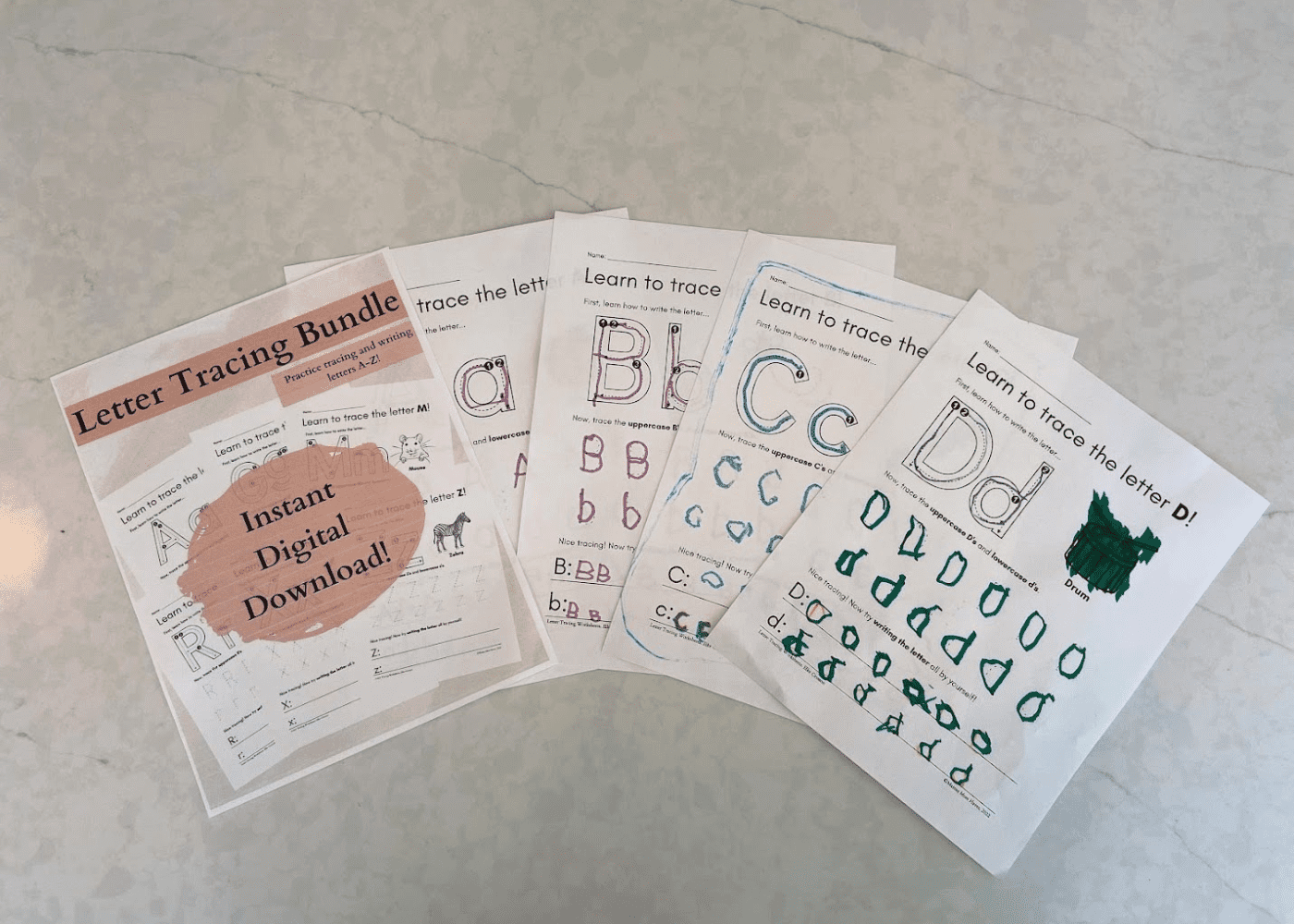
New to early literacy? Don’t worry! Learn the basics in our post, Supporting early literacy at homel
Letter tracing worksheets
Alphabet letter tracing worksheets with the letters from A-Z are available for free by either clicking the PDF in this post or heading over to Crosson’s Classroom on Teachers Pay Teachers. Simply download and print them out, and you’re ready to go!
With these free printable letter tracing sheets, your children can work on their uppercase letters and lowercase letters by tracing the dotted letters before trying them out on their own. These were developed to give children a chance to practice each letter sound, trace letters to learn proper form, and give one example of a word that starts with that letter. Once they have finished, you can brainstorm other words with the same beginning sounds, too!
If you want extra practice, try using alphabet tracing sheets in conjunction with other activities, such as tracing in the sand, tactile letter cards, and free writing. Be sure to work on the letter sound and how to correctly write the letter – These are both important vocabulary skills they will need for reading!
These letter tracing worksheets will help your child not only learn their letters but also gain a better understanding of how to write them. Alphabet tracing sheets are just one tool in your toolbox for helping your child learn letters – so get creative and have fun!
Who are these worksheets for?
These alphabet tracing worksheets are suitable for children in preschool or kindergarten, depending on their personal ability. Suitable for home or classroom use, parents and teachers alike can make use of these worksheets from A-Z.
Letter recognition
Alphabet tracing worksheets are not only helpful for letter recognition, but they can also help with letter formation. As kids trace the letters on the sheets, they will start to see how each letter is formed.
If your child is having trouble forming a certain letter, try having them trace the letter in a different color or using a thicker marker. This will help them to see the letter more clearly and make the formation easier.
You can also try having them trace the letter in a mirror, which will help them to see the letter from a different perspective. It’s also important to reinforce proper pen-holding skills and writing the letter in the right direction. Alphabet tracing sheets are a great way to help with all of this!
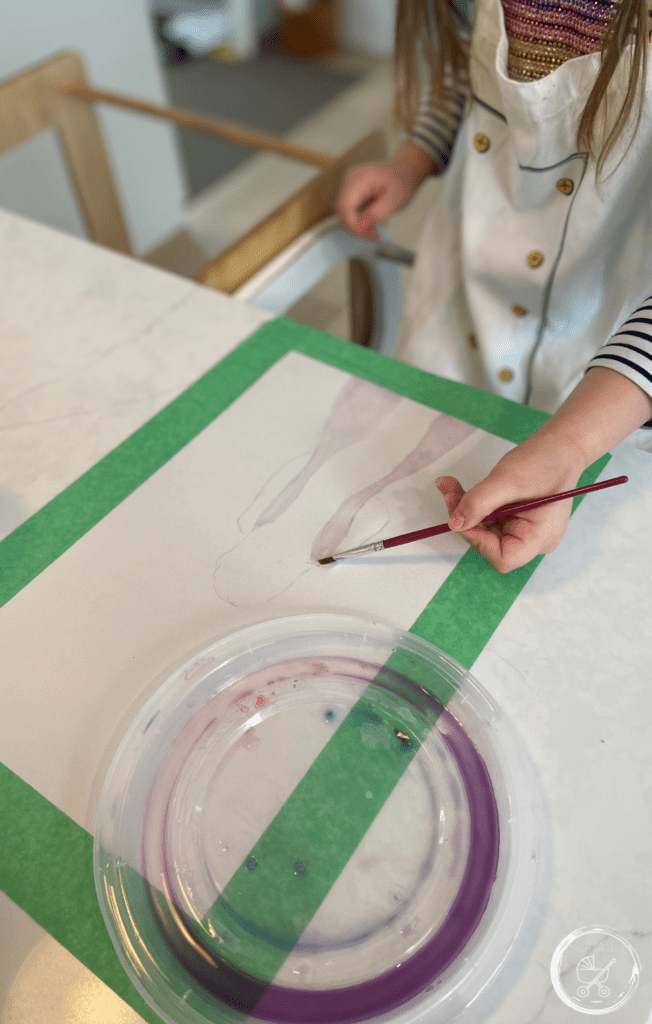
Grip strength and fine motor development
If your little one is having a tough time holding their writing utensil, then you may want to work on their grip strength and fine motor skill development. While alphabet tracing sheets can help with this, as they provide a good opportunity to practice holding a pencil or pen, it’s not ideal to have negative habits reinforced. If they keep writing this way, then it will become a habit that’s tough to break.
So, if that’s the case, take a break from the writing worksheets and work on something that helps develop grip strength and fine motor skills such as play dough, stringing beads, or painting. You can always come back to the worksheets later!
By working on these things, your child will not only be better prepared to use alphabet tracing sheets, but they’ll also have an easier time writing in general.
At the end of the day, Alphabet tracing sheets are a great way to help your child learn their letters. They’re also enjoyable for kids and can help with letter formation. But, be sure to mix things up and try different activities to keep things fun and exciting!
Activities for uppercase and lowercase letters
Alphabet tracing sheets can be used to help kids learn both uppercase and lowercase letters. It’s important to start with the basic shapes of the letters before moving on to more complex letterforms, so let them start with the bigger block letters before tracing the dotted letters in the middle of the worksheet.
Follow your child’s lead
Another thing to note is it is important to only do as many sheets as they can at any given time! Some days they may want to work on multiple worksheets, but other days one might be enough practice. Their little fingers are working hard to develop a very important skill – Patience and understanding will make the learning process much more enjoyable for everyone.
If they’ve finished the worksheet and are still interested in learning about the letter they’re working on, they could also draw something that starts with the letter on the back of the page (or multiple drawings, really!).
You could also take a break from writing and do a letter scavenger hunt around the house! See how many items they can find that start with each letter. Can they find more for the next one?
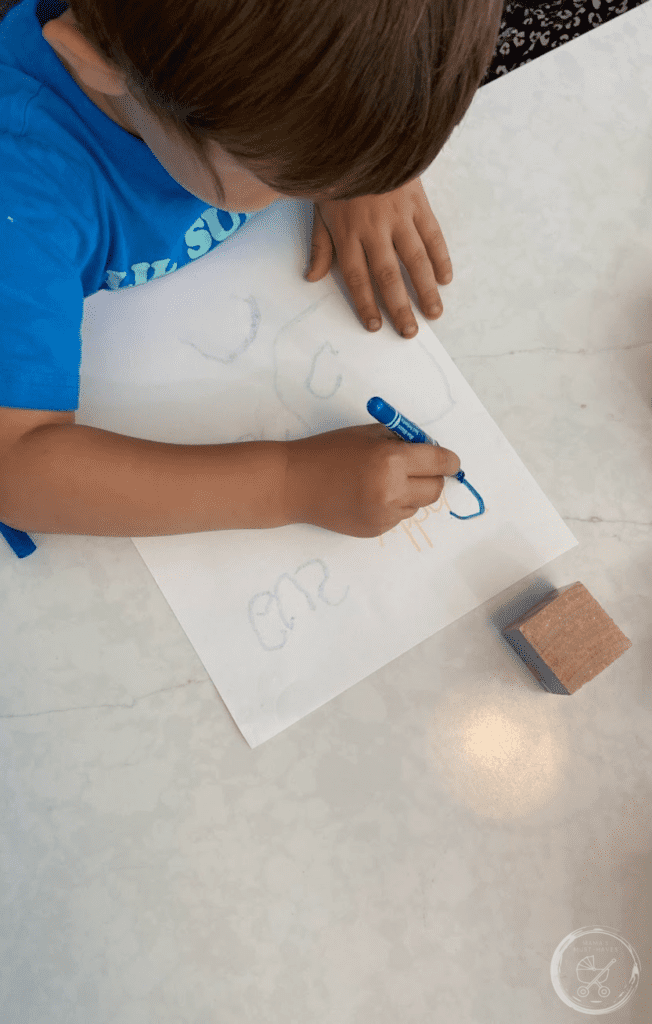
Freehand practice
Alphabet tracing sheets are a great way to get started with learning letters, but eventually, your child will need to move on to freehand practice.
In each worksheet, there is a large traceable version of the uppercase and lowercase version of each letter. You may consider cutting these out once they have finished so that your child has an example when they are ready to start freehand writing. If you cut the letters out individually (rather than in a pair of two), they can also move the letters around to create words before practicing writing them on their own.
If they enjoy this activity, you could print out templates (there are lots online!) of letters or create your own on thicker paper. This way they will last longer. You could also laminate the letters (or buy laminated letters) or put them in page protectors for repeated use!
You can also make your own Alphabet tracing sheets by downloading a template or finding one online. Once you have the template, print it out on thicker paper so that it will last longer. You can then laminate the sheet or put it in a page protector to use over and over again!
Other ways to learn letters
Alphabet tracing sheets are just one way to help kids learn their letters. There are many other great activities and games out there to teach letter recognition, formation, and sounds.
Regardless of how you work on their letters with them, the important thing is to keep it up! The fact that they’re showing interest in learning means that they are eager and ready to take on new skills – So embrace this while you can!
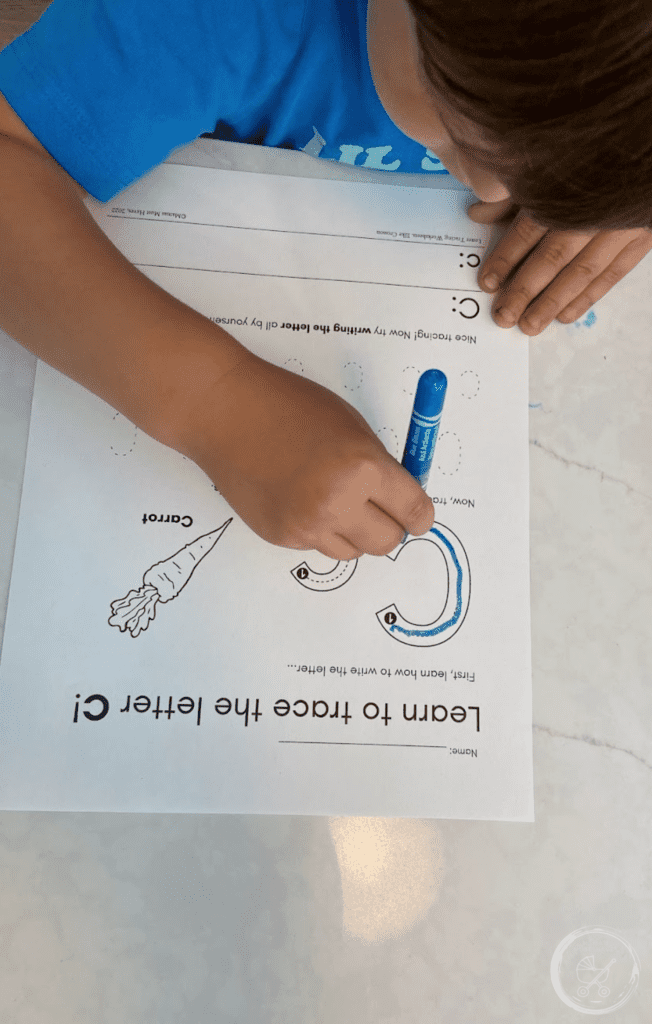
Conclusion
We hope that these worksheets are helpful as your children learn to trace, write, and get ready to read! Learning uppercase and lowercase letters are one of the first steps in literacy learning.
To ensure their letter formation improves and they continue to be engaged as they practice writing, try mixing up these letter worksheets with other engaging activities like tracing letters in sand, free writing, and making letters with playdoh. These are just a few ideas that can be used in conjunction with our free printable letter tracing worksheets!
Also, if you enjoyed these free printable worksheets, we would love to hear your thoughts!
Resources
We’ve got plenty of articles about reading and writing for young learners. Here are some you may enjoy:
- How to teach sight words
- When to teach sight words
- Sight word sentences for emergent readers
- Prepositions of place for Kindergarten: Learning activities
- What is a board book?
- The best books for a 1-Year-Old: Types and titles
Enjoying this printable? Check these out!
If you surf my Teachers Pay Teachers storefront, you will find lots of free printables for preschool and Kindergarten aged students. But, you could also check out these posts to see how we use them:
- Money matters: Free money worksheets
- Developing the senses: Free five senses nature worksheet
- Number recognition and practice: Free worksheets to learn numbers 1-10
Reading and writing with young learners
Learning to trace is just one part of a child’s literacy journey! Check out our literacy category for more articles about reading and writing.

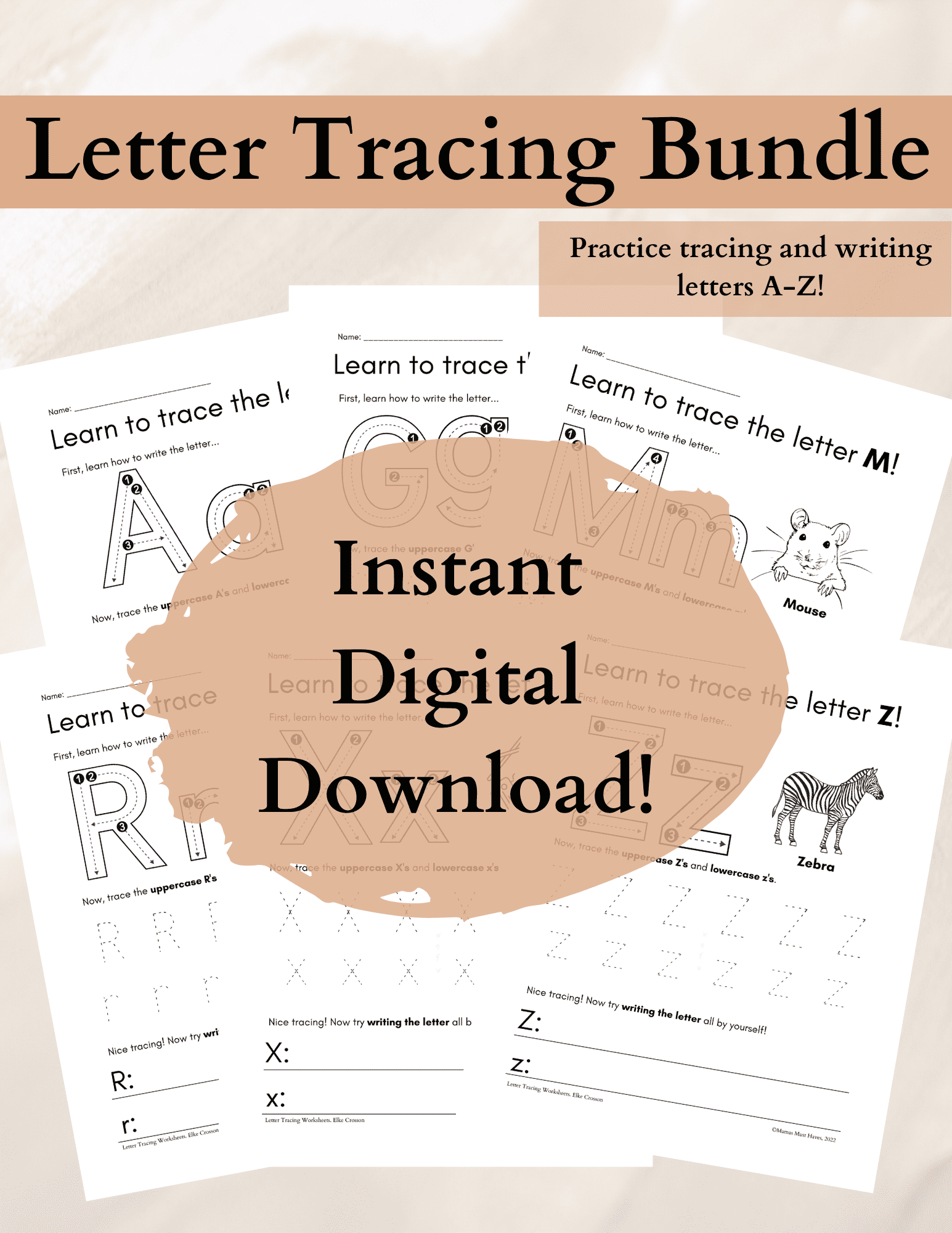
Leave a Reply